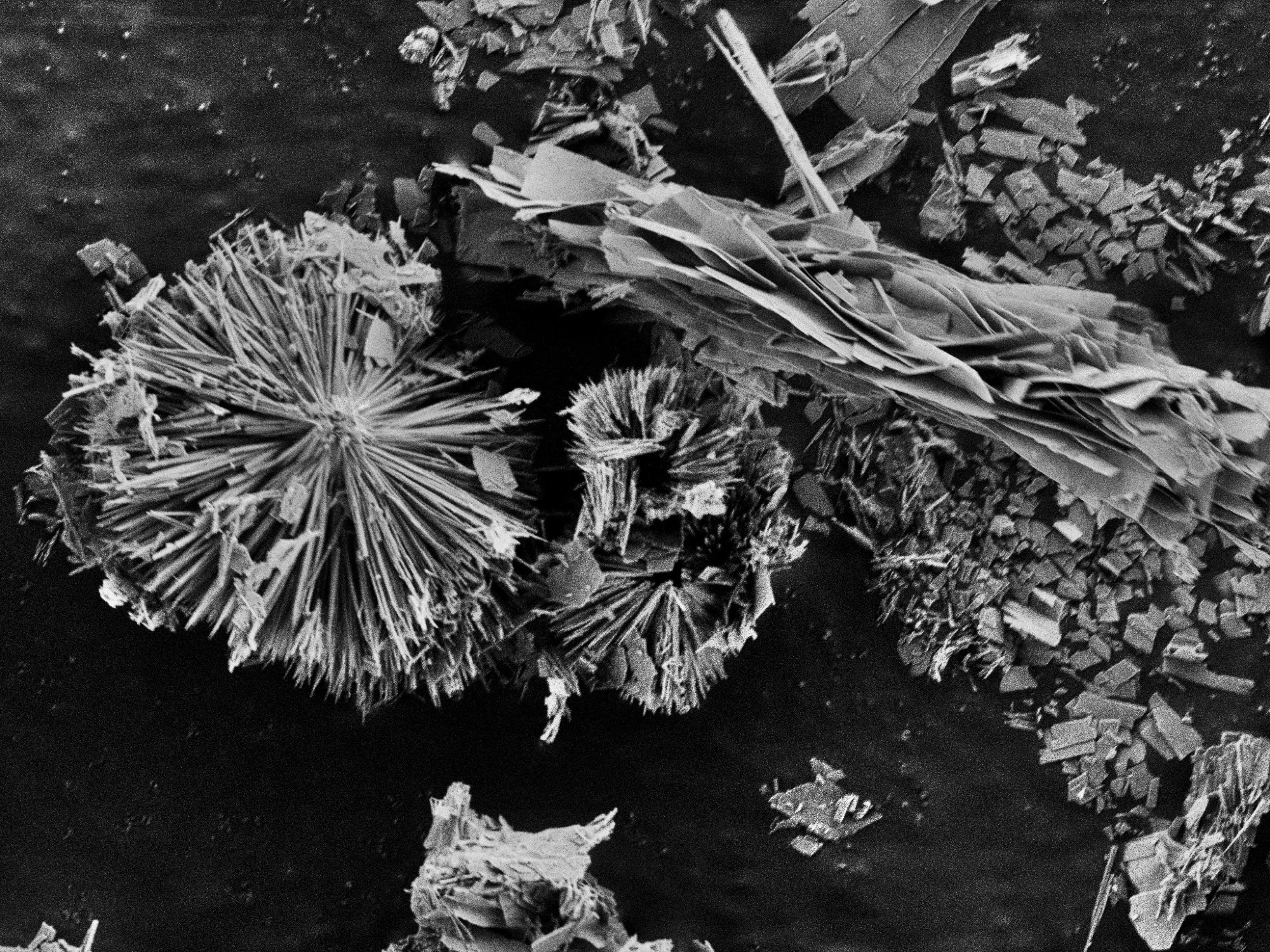Reviewed by Lexie CornerSep 10 2024
In a study published in the Journal of Materials Chemistry A, an international team led by HZB scientist Michelle Browne discovered that properly functionalized MXenes serve as highly effective catalysts for the oxygen evolution process in electrolytic water splitting.
 The surface of a Vanadium carbide MXene has been examined by Scanning Electron Microscopy. The beautiful structures are built by cobalt copper hydroxide molecules. Image Credit: B. Schmiedecke/HZB
The surface of a Vanadium carbide MXene has been examined by Scanning Electron Microscopy. The beautiful structures are built by cobalt copper hydroxide molecules. Image Credit: B. Schmiedecke/HZB
The MXene class of materials offers a range of capabilities and, in terms of stability and efficiency, outperforms the best metal oxide catalysts currently available. The team is thoroughly characterizing these MXene catalysts for water splitting at the Berlin X-ray source BESSY II and the Soleil Synchrotron in France.
Green hydrogen is seen as a key future energy storage solution, with electrolytic water splitting offering a climate-neutral way to produce the gas using solar or wind power. In this process, one electrode generates hydrogen molecules, while the other produces oxygen. However, the oxygen evolution reaction (OER) is a limiting factor in electrolysis.
Special catalysts are needed to drive this reaction. While nickel oxides are promising due to their low cost and abundance, they corrode quickly in the alkaline water of electrolyzers and have poor conductivity, hindering the development of affordable, high-performance electrolyzers. MXenes offer a promising alternative to overcome these challenges.
MXene as Catalysts
The combination of metals like titanium or vanadium with carbon and/or nitrogen to create layered compounds known as MXenes presents a promising alternative for catalysts and charge storage due to their large internal surface area.
An international team led by Dr. Michelle Browne recently studied the use of MXenes as catalysts for the oxygen evolution reaction (OER). Ph.D. candidate Bastian Schmiedecke "functionalized" the MXenes by chemically attaching cobalt and copper hydroxides to their surfaces.
In initial tests, the catalysts produced through this process outperformed pure metal oxide compounds in terms of efficiency. Additionally, the catalysts showed no signs of degradation during continuous operation and even improved in performance over time.
Measurements at BESSY II
The success of this phenomenon was demonstrated by Namrata Sharma and Tristan Petit's measurements at the BESSY II X-ray source.
We were able to use the Maxymus beamline there to find out how the outer surfaces of the MXene samples differ from the inside.
Bastian Schmiedecke, PhD Student, Helmholtz Zentrum Berlin
To learn more about the material, the researchers used scanning electron microscopy (SEM/TEM), X-ray absorption near-edge structure (XANES), X-ray diffraction (XRD), X-ray photoelectron spectroscopy (XPS), and X-ray transmission microscopy (STXM).
Outlook: Observation Under Continuous Load
We have been able to show that MXenes have great potential for use as catalysts in electrolyzers.
Dr. Michelle Browne, Study Head, Helmholtz Zentrum Berlin
The collaboration with Trinity College, Dublin, Ireland, and the University of Chemistry and Technology in Prague will continue. The team plans to further modify the MXene catalysts chemically and test their performance in traditional electrolyzers under continuous operation.
Journal Reference:
Schmiedecke, B., et al. (2024) Enhancing the oxygen evolution reaction activity of CuCo based hydroxides with V2CTx MXene. Journal of Materials Chemistry A. doi.org/10.1039/d4ta02700k